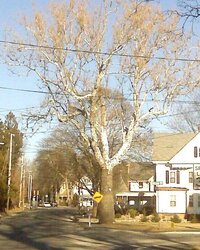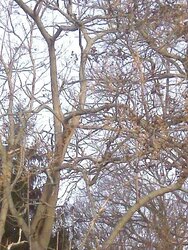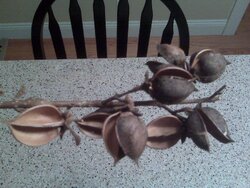Two trees pictured; first one should be fairly easy, it's a beautiful specimen at 70-ish feet tall and about 5' at the base.
Second one I actually do not know and can't seem to find any reference on it. The third pic is of the seed pods that grow profusely on this tree. I'm sure someone on here will come forth with the info!
Good luck
Second one I actually do not know and can't seem to find any reference on it. The third pic is of the seed pods that grow profusely on this tree. I'm sure someone on here will come forth with the info!
Good luck




